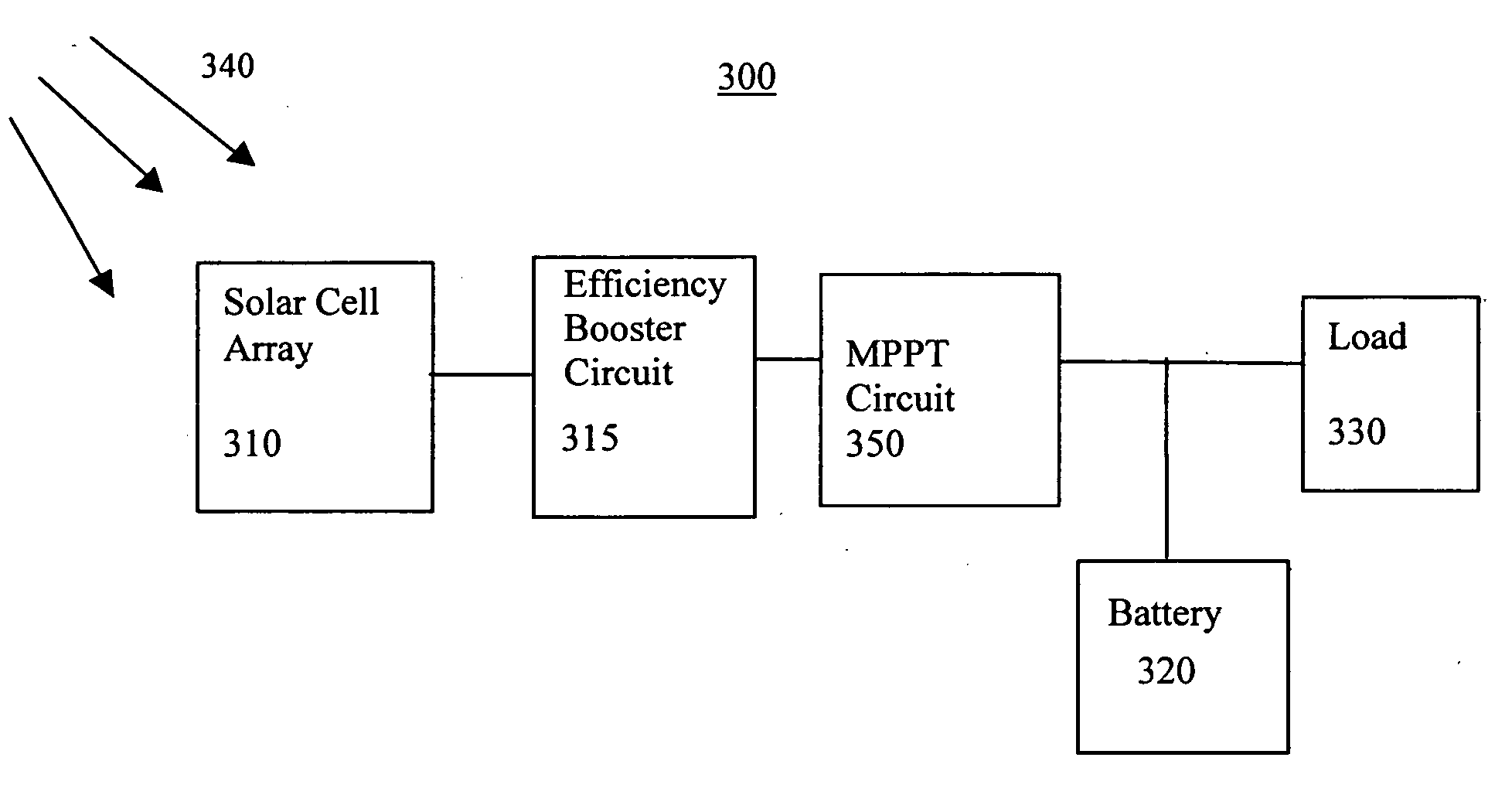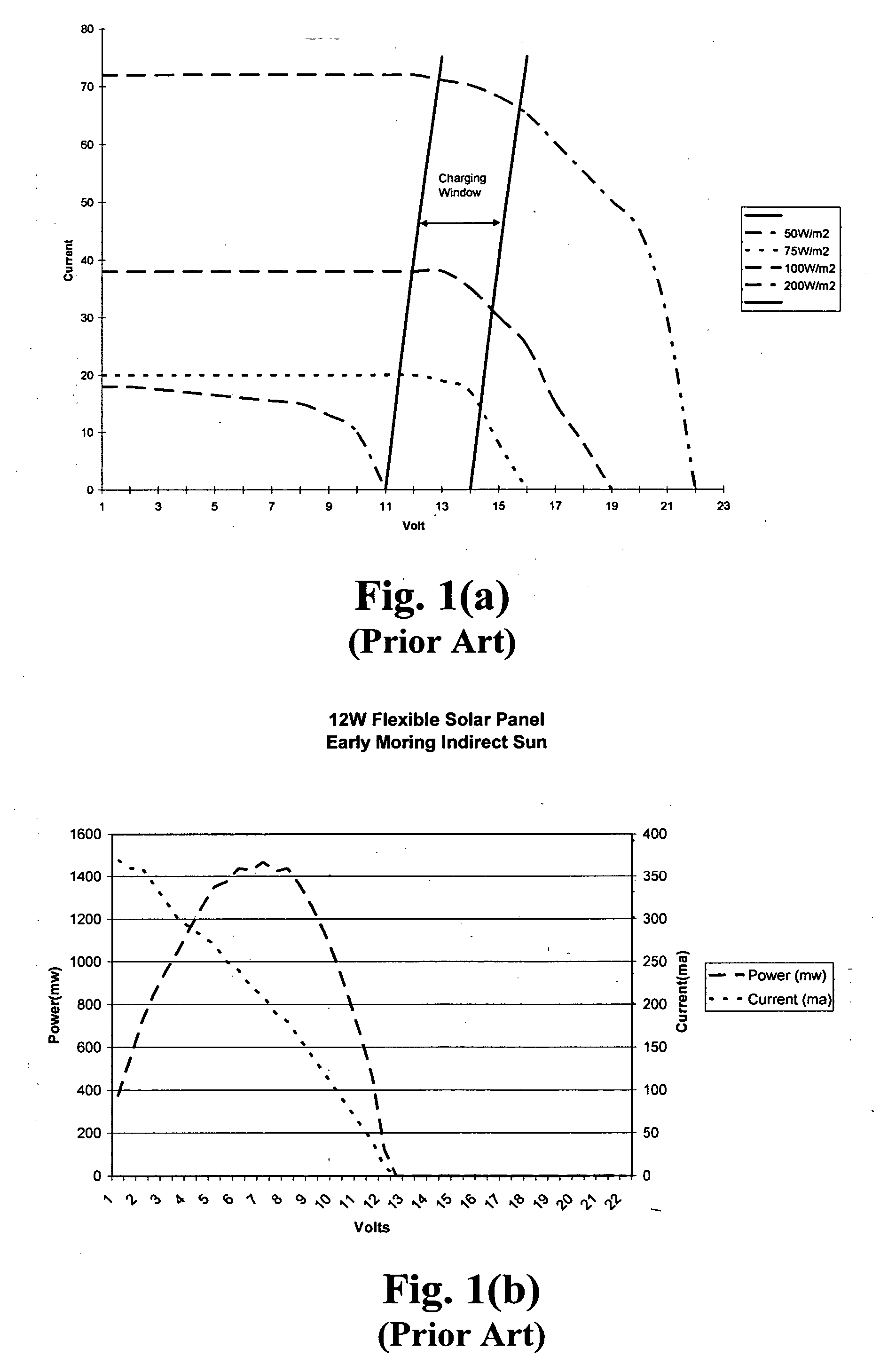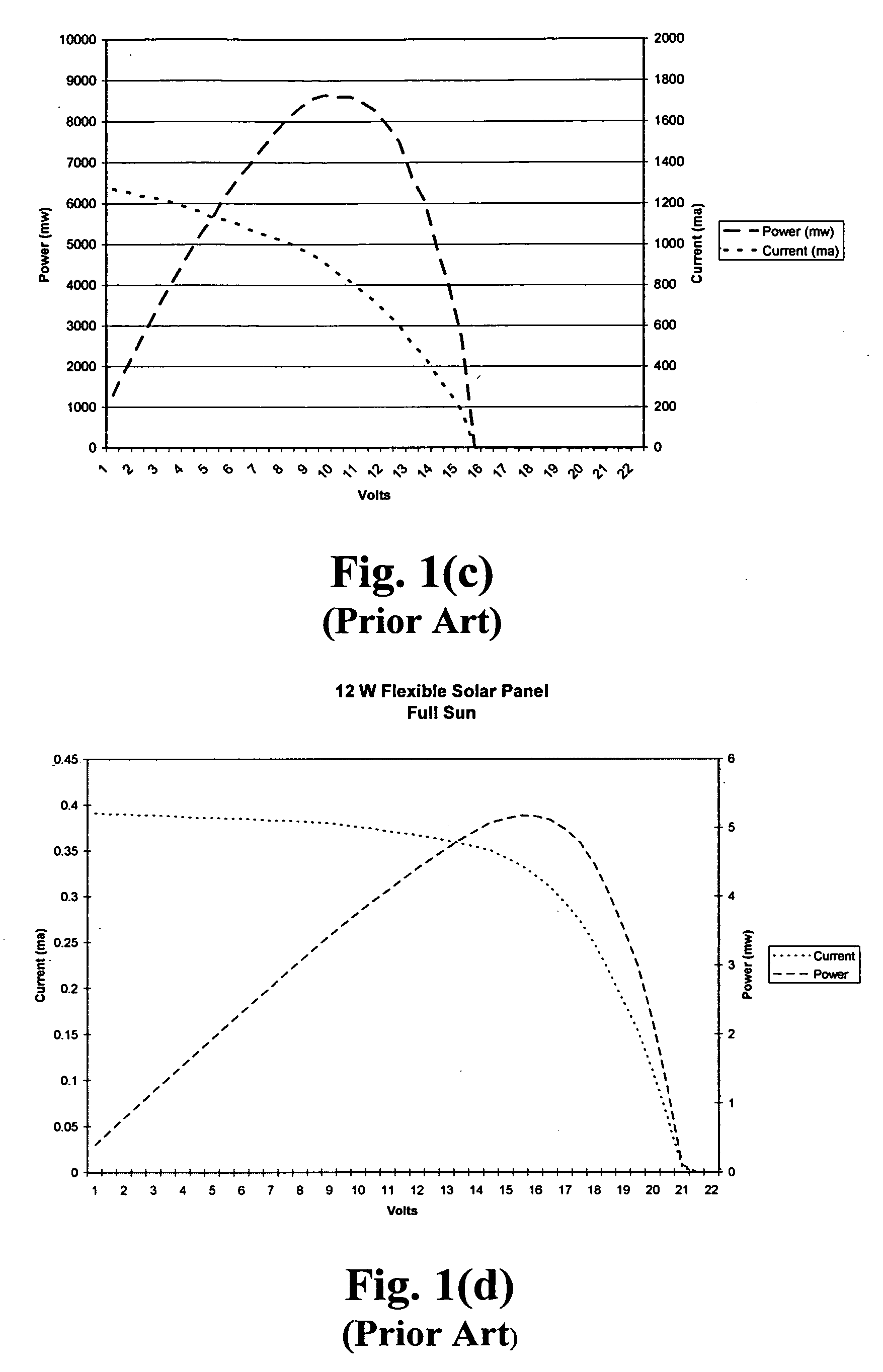Efficiency booster circuit and technique for maximizing power point tracking
a technology of efficiency booster and power point tracking, applied in the direction of electric variable regulation, process and machine control, instruments, etc., can solve the problems of solar cell array not receiving enough sunlight to produce adequate power, etc., to prevent overcharging of electrical storage batteries, reduce voltage, and generate a considerable amount of energy
- Summary
- Abstract
- Description
- Claims
- Application Information
AI Technical Summary
Benefits of technology
Problems solved by technology
Method used
Image
Examples
Embodiment Construction
[0051] Further features and advantages of the invention, as well as the structure and operation of various embodiments of the invention, are described in detail below with reference to the accompanying FIGS. 2-17, wherein like reference numerals refer to like elements. The embodiments of the invention are described in the context of solar power and solar cells. Nonetheless, one of ordinary skill in the art readily recognizes that any photovoltaic device is encompassed by the embodiments of this invention as are other variable electrical power sources such as, but not limited to wind, geothermal, biomass, fuel cells and hydroelectric power sources.
[0052] Solar cell arrays are an excellent source of power since they can be operated anywhere under sunlight. However, improving the efficiency of the solar cell array is a major concern since solar cell arrays do not normally operate well under low light conditions. Specifically, since almost all solar cell arrays come with a rechargeable...
PUM
 Login to View More
Login to View More Abstract
Description
Claims
Application Information
 Login to View More
Login to View More - R&D
- Intellectual Property
- Life Sciences
- Materials
- Tech Scout
- Unparalleled Data Quality
- Higher Quality Content
- 60% Fewer Hallucinations
Browse by: Latest US Patents, China's latest patents, Technical Efficacy Thesaurus, Application Domain, Technology Topic, Popular Technical Reports.
© 2025 PatSnap. All rights reserved.Legal|Privacy policy|Modern Slavery Act Transparency Statement|Sitemap|About US| Contact US: help@patsnap.com



